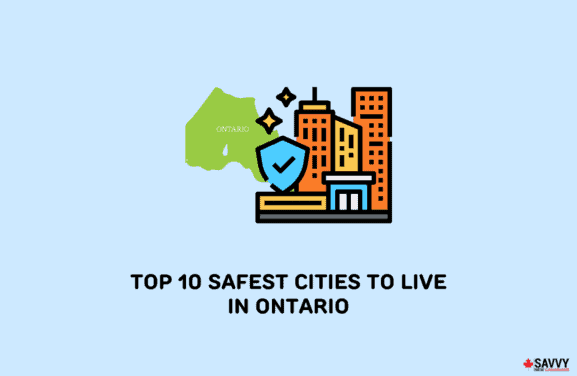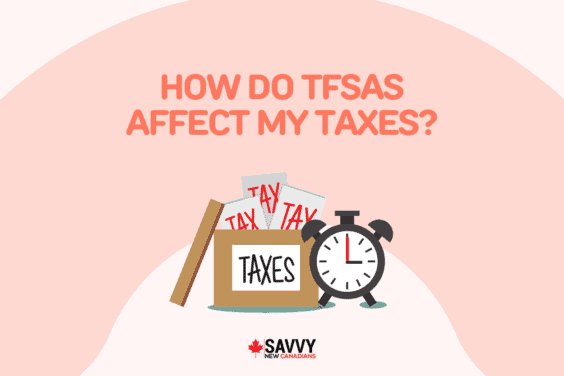Key Takeaways
- Nova Scotia has a unique blend of history, culture, agriculture, and amazing scenery.
- You can choose to live in cheaper small towns like Queens and Trenton or in Nova Scotia’s serene and cultured cities like Cape Breton, Halifax, or Truro.
- However, if you are seeking new job opportunities ensure you choose a place with lower unemployment rates.
With its pristine nature and affordable real estate prices, Nova Scotia has become one of the best work-from-home destinations in Canada. This province offers countless outdoor activities, has the friendliest locals, and is a paradise for foodies.
Moving to Nova Scotia is a big decision, and we’re here to help. This article provides information on everything you have to know about the province — from the best places to live to the cost of living in Nova Scotia.
10 Best Places to Live in Nova Scotia Comparison Table
| City / Town | Livability Score | Average Cost of Buying a Home | Average Cost of Renting a 1-bed Apartment |
| West Hants | 59 | $251,306 | $1,230 |
| Lunenburg | 67 | $299,900 | $1,342 |
| New Glasgow | 66 | $195,000 | $685 |
| Cape Breton | 72 | $183,600 | $827 |
| Truro | 53 | $349.450 | $703 |
| Halifax | 84 | $522,900 | $1,915 |
| Trenton | 69 | $249.900 | $710 |
| Queens | 58 | Data unavailable | Data unavailable |
| Amherst | 62 | $265,000 | $400 |
| Kings Subd. A | 54 | $439,900 | Data unavailable |
Best Places and Cities to Live In Nova Scotia
1. Halifax
One of the best places to live in Nova Scotia is Halifax. It’s known for its forestry, mining, agriculture, and natural gas extraction sectors. Here, you can enjoy cool winters and warm summers — a contrast to the weather in most northern areas of the country.
| City | Halifax |
| Population | 440,072 |
| Average Cost of Living (one person, without rent) | $1,030 |
| Average Cost of Buying a Home | $522,900 |
| Average Cost of Renting a One-bedroom Apartment | $1,915 |
| Crime Rate (per 100,000 people) | 3,823 |
| Unemployment Rate | 6.9% |
2. Cape Breton
Cape Breton is an island filled with beautiful scenery, culture, history, and more. Although smaller than most cities in the province, more and more people are moving here as high-quality education is affordable, the crime rate is lower, and the locals are friendly.
As for the weather, Cape Breton receives the greatest amount of snow in the entire province. During February, the island’s coldest month, the temperature can reach 21 °F on average.
| City | Cape Breton |
| Population | 98,318 |
| Average Cost of Buying a Home | $183,600 |
| Average Cost of Renting a One-bedroom Apartment | $827 |
| Crime Rate (per 100,000 people) | 3,405 |
| Unemployment Rate | 11.8% |
Related: Best places to visit in Nova Scotia.
3. Truro
Due to its friendly community, wide-open spaces, and excellent schools, Truro has become one of the most popular cities to settle in Nova Scotia. It’s situated aback from the crowded coastline but is still accessible to several Cornish beaches, like Perranporth Beach and Carne Beach.
On average, the summers in Truro are comfortable and often cloudy, and the winters are freezing and snowy. July is the hottest month in Truro, with an average high of 75°F and a low of 55°F.
| City | Truro |
| Population | 12,954 |
| Average Cost of Buying a Home | $349,450 |
| Average Cost of Renting a One-bedroom Apartment | $703 |
| Crime Rate (per 100,000 people) | 5,833 |
| Unemployment Rate | 5.2% |
4. New Glasgow
Named one of the top places to live in Nova Scotia, New Glasgow has a population of just under 10,000 and more than 7,400 kilometres of coastline. It’s known as the commercial hub of northeastern Nova Scotia as it houses many well-known chain stores and malls.
Average temperatures in New Glasgow change drastically. Summer is from June through August, while Winter is from December through February.
| City | New Glasgow |
| Population | 9,471 |
| Average Cost of Buying a Home | $195,000 |
| Average Cost of Renting a One-bedroom Apartment | $685 |
| Crime Rate (per 100,000 people) | 8,248 |
| Unemployment Rate | 8.2% |
Best Small Towns to Live In Nova Scotia
5. Lunenburg
There are plenty of reasons why Lunenburg is one of the best small towns to live in Nova Scotia. It has a more relaxed pace than the city, is closer to the beaches, and offers great hiking trails. It’s a small town with a close-knit community, which enables you to meet people fast.
Lunenburg does experience snow — for about five months a year, usually from November through April. The coldest month here is February, with an average snowfall of 9.5 inches.
| Town | Lunenburg |
| Population | 2,396 |
| Average Cost of Buying a Home | $299,900 |
| Average Cost of Renting a One-bedroom Apartment | $1,342 |
| Crime Rate (per 100,000 people) | 3,618 |
| Unemployment Rate | 6.2% |
Related: Minimum wage in Nova Scotia.
6. Queens
Queens is a great place to settle down as it has a lower cost of living and offers affordable housing. It’s a hotspot for museums as the Flushing Meadows Corona Park, Louis Armstrong House Museum, Queens County Farm Museum, and Noguchi Museum are all in this town.
In Queens, the summers are warm and wet, and the winters can get very cold and windy. On average, the temperature of the town varies from 27°F to 84°F.
| Town | Queens |
| Population | 10,501 |
| Average Cost of Buying a Home | data unavailable |
| Average Cost of Renting a One-bedroom Apartment | data unavailable |
| Crime Rate (per 100,000 people) | 4,216 |
| Unemployment Rate | 14.3 |
7. Amherst
Nova Scotia immigration rates have increased due to the number of people moving to Amherst. This small town offers high-speed internet, easy access to transportation, and a vibrant community. Amherst has everything you need to start a new life in Nova Scotia.
The cold season in Amherst lasts for three months, from December to March. The summer season lasts for almost four months, from July to October.
| Town | Amherst |
| Population | 9,404 |
| Average Cost of Living (one person, without rent) | $1,732 |
| Average Cost of Buying a Home | $265,000 |
| Average Cost of Renting a One-bedroom Apartment | $450 |
| Crime Rate (per 100,000 people) | 10,717 |
| Unemployment Rate | 5.2% |
8. Kings Subd. A
Kings, Subd. A is one of the four subdivisions in Kings County. It has a thriving economy and diverse business base, where numerous opportunities to start a business or secure employment are present. It has the warmest weather in Nova Scotia with its beautiful summer months.
| Town | Kings Subd. A |
| Population | 22,355 |
| Average Cost of Buying a Home | $439,000 |
| Average Cost of Renting a One-bedroom Apartment | data unavailable |
| Crime Rate (per 100,000 people) | 3,657 |
| Unemployment Rate | 4.8% |
Related: Tax brackets and rates in Nova Scotia.
9. West Hants
West Hants is an excellent place to settle, especially if you have a family, as it has a safe environment, friendly community, and low crime rate. It also offers many recreational activities perfect for families, like the Serenity Acres Family Ranch and On Tree Fun and Adventure Park.
Raincoats and umbrellas are handy in November when you’re in West Hants, as the town experiences the most rain. West Hants gets 43.1 centimetres of snow during December.
| Town | West Hants |
| Population | 19,509 |
| Average Cost of Buying a Home | $251,306 |
| Average Cost of Renting a One-bedroom Apartment | $1,230 |
| Crime Rate (per 100,000 people) | 3,274 |
| Unemployment Rate | 5.1% |
10. Trenton
Trenton earns the third spot in Moving Waldo’s 10 best places to live in Canada in 2022. The list highlighted Trenton’s proximity to amenities, low housing costs, and low crime rate. Trenton also houses Trenton Park, one of Nova Scotia’s best parks.
The wettest month in Trenton is October, followed by September and November. Trenton gets the most snow in January.
| Town | Trenton |
| Population | 2,407 |
| Average Cost of Buying a Home | $249,900 |
| Average Cost of Renting a One-bedroom Apartment | $710 |
| Crime Rate (per 100,000 people) | 3,844 |
| Unemployment Rate | 16% |
How to Choose the Best Places to Live in Nova Scotia
Choosing the best place to live in Nova Scotia depends on different factors. Most cities and towns in the province are livable, but the perfect area for you will depend on your priorities.
For instance, if you want to move to Nova Scotia to start a career, Kings Subd. A might be perfect for you. This town has the lowest unemployment rate, meaning it has a booming economy and offers countless employment opportunities to its residents.
If you’re going to move with your family but have a limited budget, choosing Cape Breton or Trenton might be ideal, as you can own affordable houses in these areas.
Ranking Methodology
To rank the top five of the best places to live in Nova Scotia, we’ve looked into different cities and towns in the provinces and assessed them based on the following: affordability, population, crime rates, unemployment rates, and the quality of life of the residents, which includes their access to recreational facilities and public transportation.
Using a livability score, we’ve ranked five of the ten places mentioned in this article. The livability score will help you determine which is the best place for you to live in Nova Scotia.
The livability score of each place presented in the table was based on the following categories: cost of living, job opportunities, housing costs, and overall safety.
References
Make Smart Decisions
Save yourself from moving to one of the worst places to live in Nova Scotia by using this article as your guide in choosing. We gave an overview of different cities and towns in the province, so you can easily determine which one suits your lifestyle, budget, and goals.
FAQs
Lunenburg is the nicest town in Nova Scotia, as it highlights colourful houses and picturesque waterfronts. No wonder this town earned several awards, including the “Most Beautiful Small Town in Canada” and the “Prettiest Painted Places in Canada.”
There are plenty, like Peggy’s Cove, south shore beaches, the cliffs of Fundy Geopark, and Brier Island.
Halifax is the warmest part of Nova Scotia as it experiences milder winder than most of the province’s cities and inland towns.
Winters can get extremely cold in the Northern region of Nova Scotia because of the ice build-up in the Gulf of Saint Laurence. During the height of winter (January and February), temperatures can reach -10°C (14°F).
Truro is an ideal place to retire because it offers a mix of rural and urban amenities. It’s home to a seniors’ center, hospital, shopping malls, and many recreational facilities and parks.
Related: Here are the best places to live in Canada for families.



